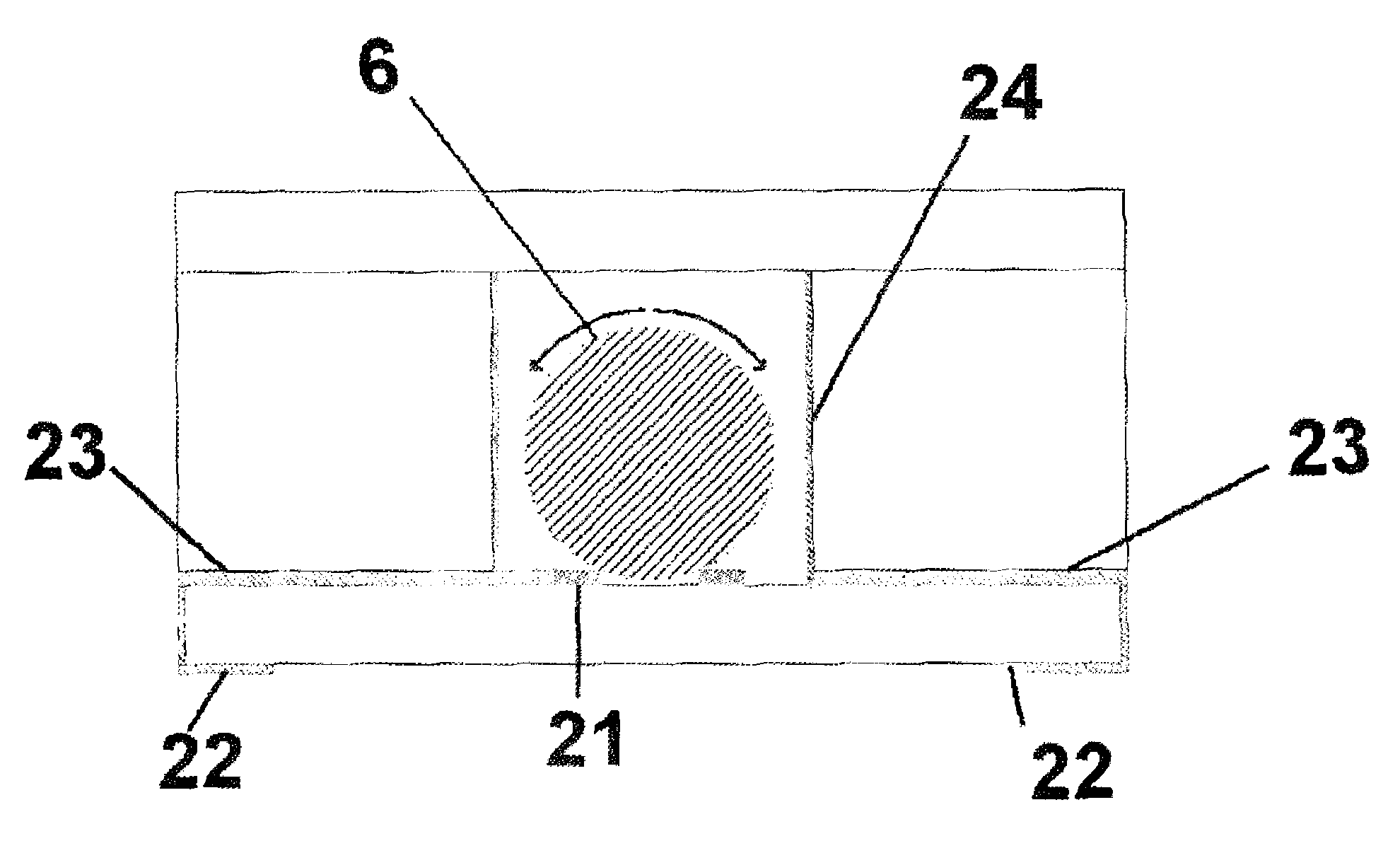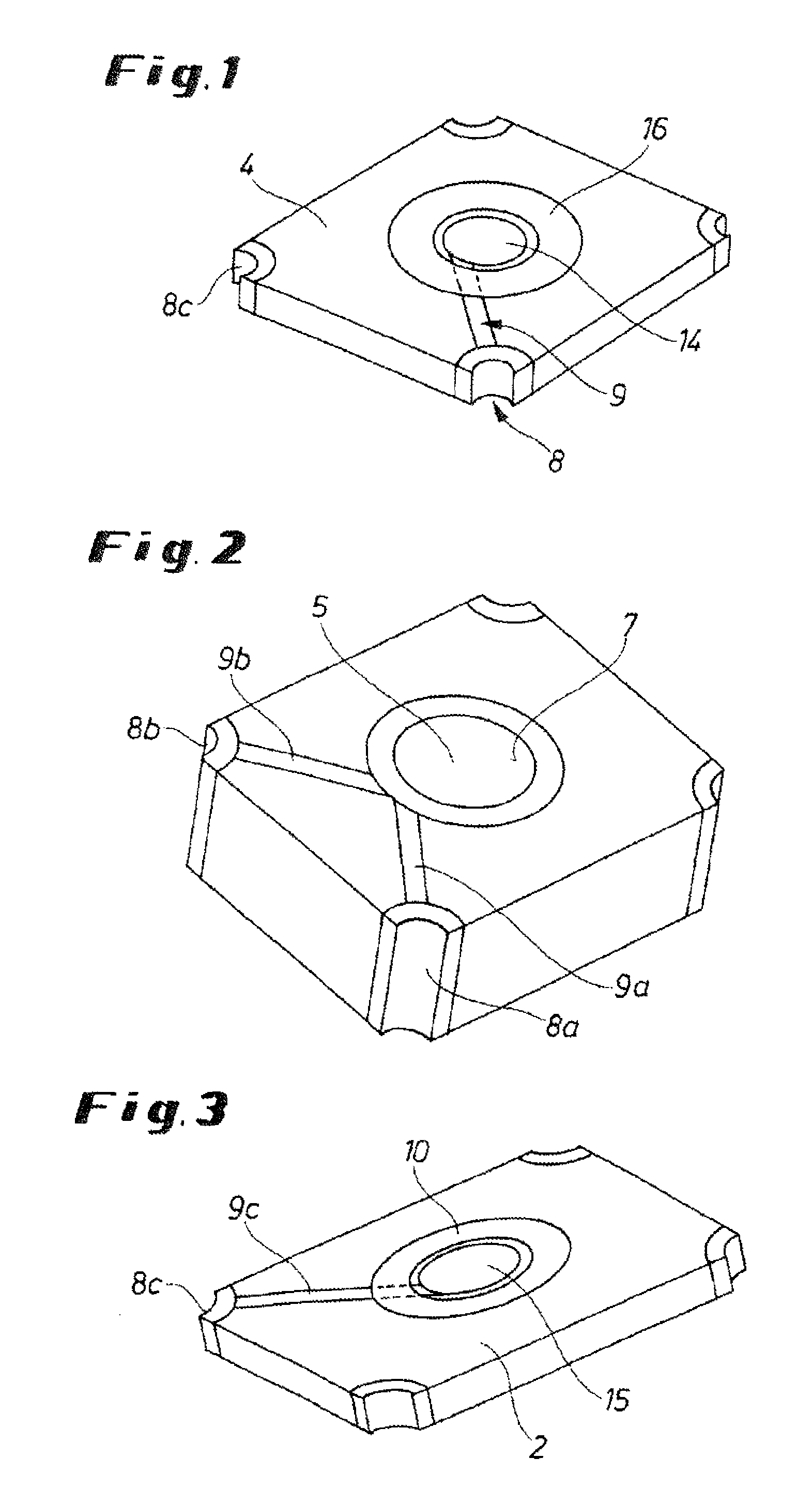Movement and position identification sensor
a position identification and sensor technology, applied in the field of movement sensors, can solve the problems of inability to fast and parallel functional test of individual sensors, significant disadvantages in production engineering and costs, and multiple contact columns, so as to facilitate free movement, reduce sensor sensitivity, and high resistance
- Summary
- Abstract
- Description
- Claims
- Application Information
AI Technical Summary
Benefits of technology
Problems solved by technology
Method used
Image
Examples
Embodiment Construction
[0086]The element illustrated in FIG. 1 is the base plate 4. The contact surface 14 is arranged centrally. An electrical connection leads from said contact surface via the conductor tracks 9 to a connection contact 8. The latter is arranged at a corner point of the base plate and configured in a virtually circular fashion.
[0087]FIG. 2 illustrates the chamber plate 3. A drilled hole for producing the cavity 5 can be discerned in the center. The inner walls 7 of said drilled hole form the inner surfaces the electrically conductive inner surfaces of the cavity 5. Conductor tracks (in Example 2 conductor tracks), lead from the electrically conductive inner surfaces 7 to two connection contacts 8. Electrically conductive connections to the connection contact of the base plate 4 are involved. The conductor track 9a is accordingly aligned in a manner corresponding to the conductor track 9 of the base plate 4.
[0088]FIG. 3 illustrates the cover plate 2. The latter is aligned mirror-symmetric...
PUM
 Login to View More
Login to View More Abstract
Description
Claims
Application Information
 Login to View More
Login to View More - R&D
- Intellectual Property
- Life Sciences
- Materials
- Tech Scout
- Unparalleled Data Quality
- Higher Quality Content
- 60% Fewer Hallucinations
Browse by: Latest US Patents, China's latest patents, Technical Efficacy Thesaurus, Application Domain, Technology Topic, Popular Technical Reports.
© 2025 PatSnap. All rights reserved.Legal|Privacy policy|Modern Slavery Act Transparency Statement|Sitemap|About US| Contact US: help@patsnap.com



